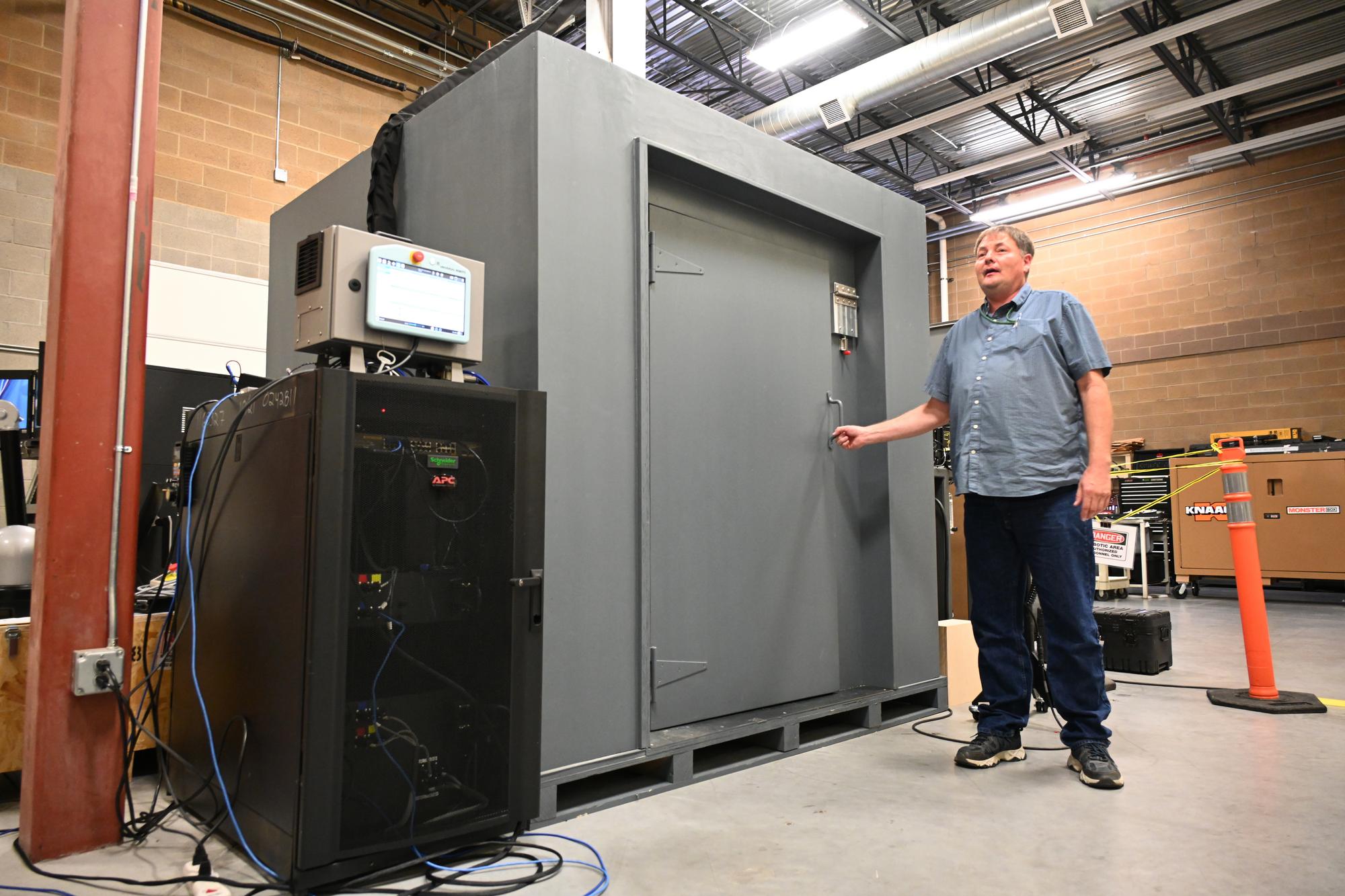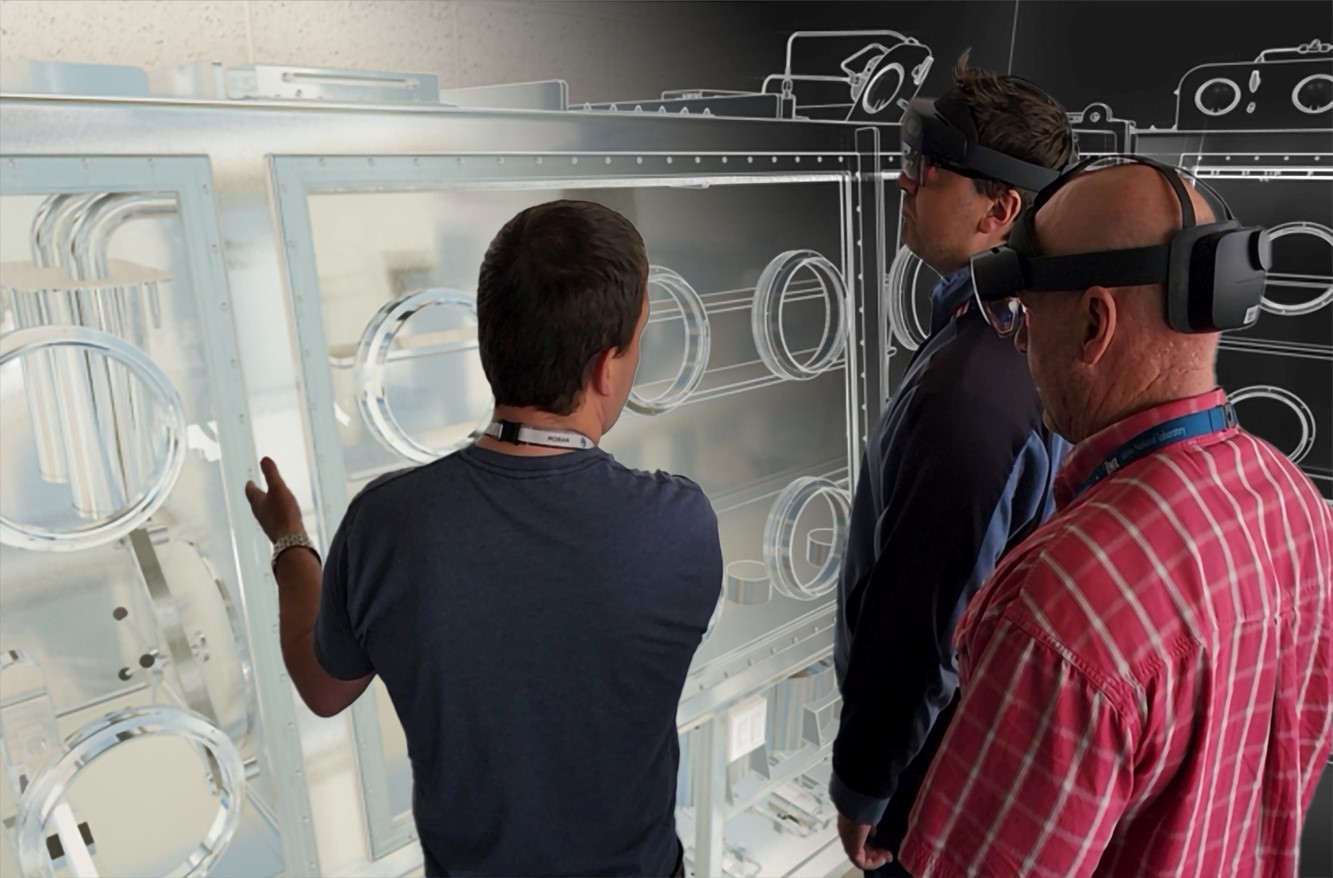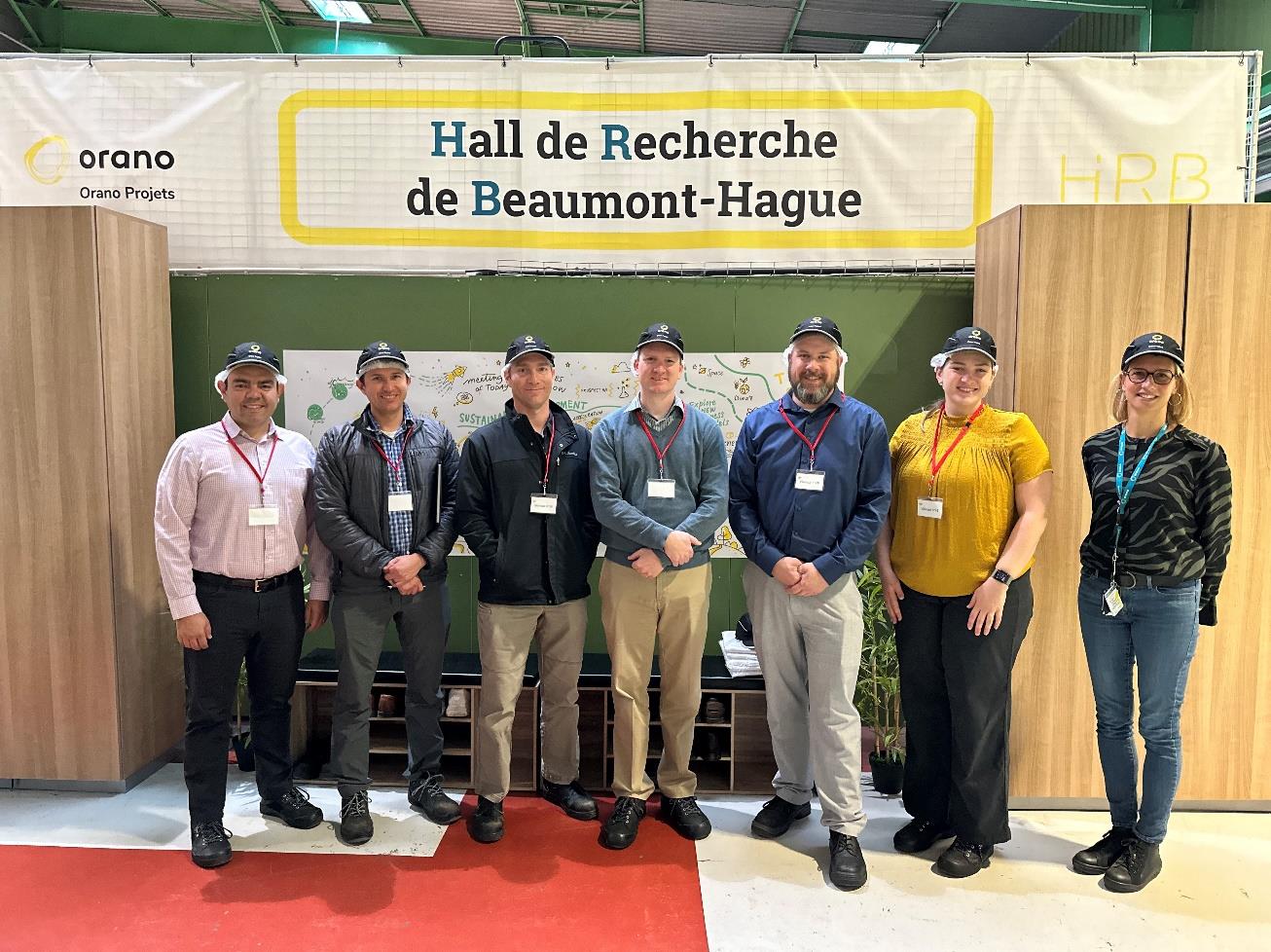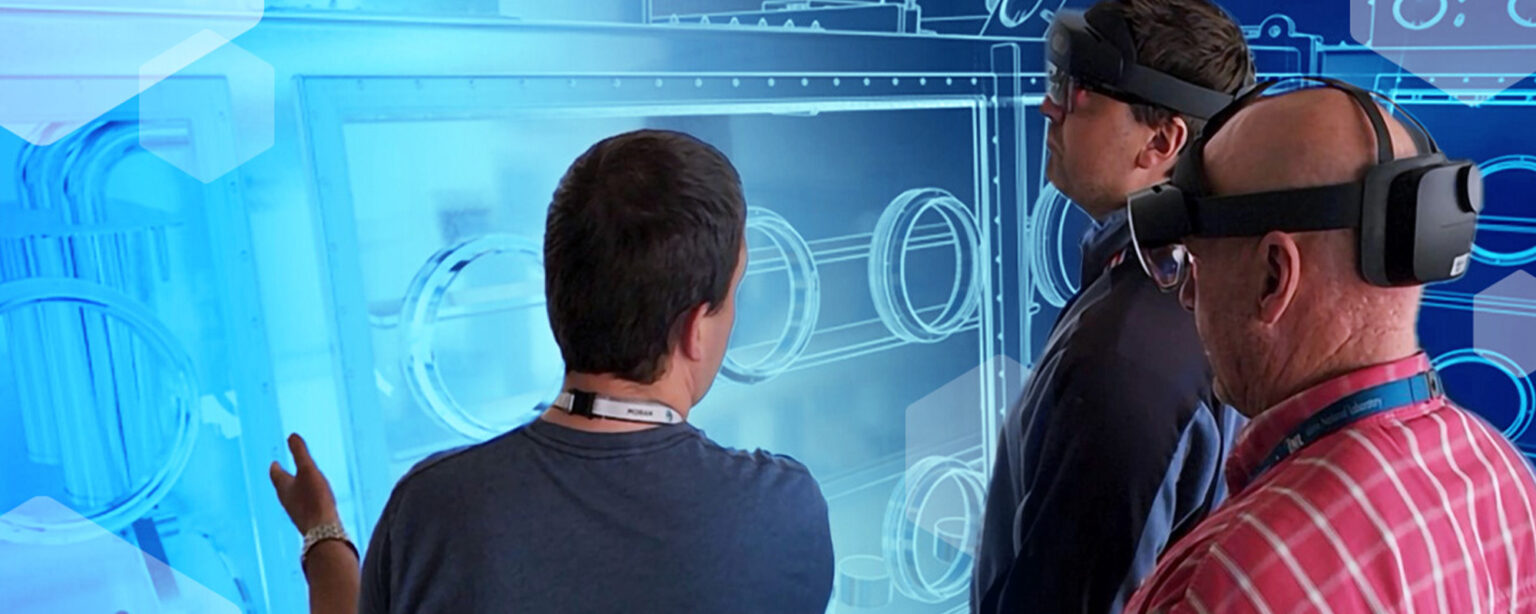For 75 years, Idaho National Laboratory has been at the forefront of nuclear energy and technology research. This research includes the nuclear fuel cycle, a multistep process that covers the entire life cycle of nuclear fuel, from mining uranium for use in a reactor to the safe management and disposal of spent, or used, fuel.
As part of this research focus, INL enables a variety of professional development opportunities for its employees such as designing a one-of-a-kind mobile hot cell and visiting commercial nuclear fuel reprocessing facilities in France. Projects like this are changing the way current and future nuclear nonproliferation experts develop the skills and support national security.
Mobile hot cell for removing radioactive isotopes
The National Nuclear Security Administration’s Office of Radiological Security commissioned INL researchers to develop a rapidly deployable, easily configurable mobile hot cell. This hot cell uses robotics instead of manual manipulators to safely remove radioactive sources from medical research and commercial facilities. This project not only addresses a critical need, but also has served as an exciting career development opportunity.

Eric Egan, the project’s principal investigator, has worked on several robotics-related projects at INL, including the Biomass Feedstock National User Facility’s Process Development Unit. When now-retired INL employee Kevin Croft asked him to work on the mobile hot cell project, Egan jumped on the chance.
“I have always had a strong interest in the electro-mechanical world, so the opportunity to use robotics to manipulate radioactive sources was just awesome,” Egan said.
The final design of the one-of-a-kind mobile hot cell can be shipped in multiple pieces, assembled in less than 48 hours, and includes shielding that operators can adjust depending on the type of radioactive source. At its largest, the hot cell weighs around 78 tons, has 15-inch-thick steel walls, and has the internal space of about a “small broom closet,” Egan said.

During the project, Egan took advantage of INL’s Employee Education Program, which is available to full- and part-time employees to pursue higher education or earn certifications. Through the program, Egan earned his bachelor’s degree in machine design while working full-time at INL. He now applies what he learned to the mobile hot cell.
“This project is very appealing in that it goes beyond the theoretical and straight to the practical,” Egan said. “It will make an actual difference. It will make the world a safer place.”
Ultimately, Egan wants to continue Croft’s legacy and deliver a product that serves the nation’s radiological security needs.
“My mentors have made a real impact on me,” Egan said. “I’m trying to make Kevin proud.”
Digital twin for a new generation of nonproliferation researchers
Beartooth, a configurable nuclear fuel cycle test bed, is under construction at INL. Lab experts will use the test bed for aqueous separations, processes that use solvents to separate materials, like uranium, from undesired materials, like chemical and radiological impurities. This process is important for developing advanced nuclear fuels and testing nuclear nonproliferation technologies. Beartooth’s flexible design allows it to process many different fuel types including TRISO and high-assay low-enriched uranium, or HALEU, fuels.
In addition to being used to address current and future research needs, the test bed will also be used by future nonproliferation professionals to develop their skills as part of the Athena Initiative. This multi-lab collaboration, sponsored by the National Nuclear Security Administration’s Nonproliferation Stewardship Program, aims to bolster the nation’s nonproliferation capabilities and maintain a skilled workforce.
Before construction began, INL researchers designed and built a digital twin of Beartooth using mixed reality. Researcher will use the digital twin for cybersecurity, artificial intelligence and machine learning testing. Beartooth and its digital twin will also help future nonproliferation professionals develop skills in person and remotely.

“Using both mixed reality and the digital twin together provides a unique opportunity for future nonproliferation experts,” said Kaleb Houck, the digital engineering lead for Beartooth. “International experts and future nonproliferation researchers will be able to collaborate in real time in ways that can’t be replicated with physical assets.”
Current methodology to develop nonproliferation skills starts with two-dimensional diagrams and flowsheets and can expand to the use of expensive physical mock-ups if available. However, most skill development cannot be completed until the actual system is fully fabricated, delaying key operational time. With Beartooth’s digital twin, this preparation has started.
“Mixed reality enables us to bridge the gap between the two skill development methods, providing the benefits of both without the cost of physical mock-ups,” Houck said.
The Beartooth digital engineering team also involved several interns, many of whom were hired as full-time employees once their internships ended.
One of those interns, Kolton Heaps, now works as a full-time digital visualization scientist at INL. Heaps started his internship working on a project with TerraPower and eventually moved over to Beartooth developing visualizations for the digital twin.
Heaps compares building digital twins to building an iPhone.
“All of the components like GPS, music and messaging already existed, but putting them together is where the magic occurs,” Heaps said.
In the case of digital twins, the team took preexisting components, like the digital models of the system, monitoring systems and novel sensors, and combined them into one mixed reality model enabling next-level skill development and research.
Visiting commercial fuel recycling facilities
In addition to providing state-of-the-art skill development for nuclear nonproliferation researchers, the Athena Initiative provides early- and mid-career staff members with mentorship and career development opportunities.
These opportunities included a visit to Orano’s La Hague facility, the world’s foremost commercial nuclear fuel recycling facility, in northwestern France. INL researchers Luis Ocampo, Mathew Snow, Addyson Barnes, Justin Cooper and Jacob Brookhart toured Orano’s storage pools, fuel reprocessing facilities, and research laboratories and met with other fuel cycle experts.

“By physically seeing international nuclear fuel cycle facilities and interacting personally with leading experts from other nations, INL staff gained a new perspective that is difficult to develop any other way,” said Kevin Lyon, a senior technical advisor on fuel cycle science and technology.
These new perspectives include gaining a better understanding of the challenges facing industrial-scale fuel recycling facilities and the diverse skill sets needed to become nuclear nonproliferation experts, Lyon said.
“With these experiences, INL staff have expanded their worldview and are now far better prepared to innovate, collaborate and execute with excellence,” Lyon said.
Additionally, many technologies and techniques used at the Orano facility are also used at INL as part of the lab’s integrated fuel cycle solutions initiative.
“This highlights the relevance of INL’s impact on and support of the nuclear industry to enable clean energy objectives while ensuring solutions that are sustainable,” Lyon said.
Under the Athena Initiative, INL employees have also participated in rotational assignments. For instance, INL staff members gained experience performing work at both Pacific Northwest Nuclear Laboratory and Savannah River National Laboratory, and have participated in workshops, conferences and facility tours both domestically and around the world.





